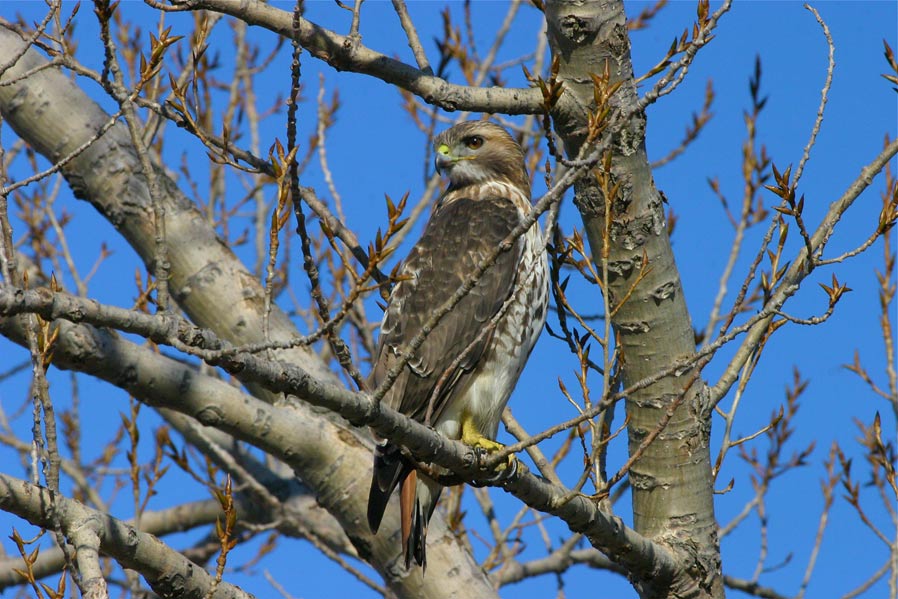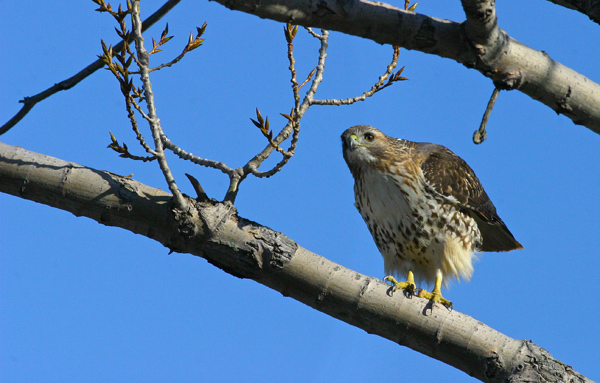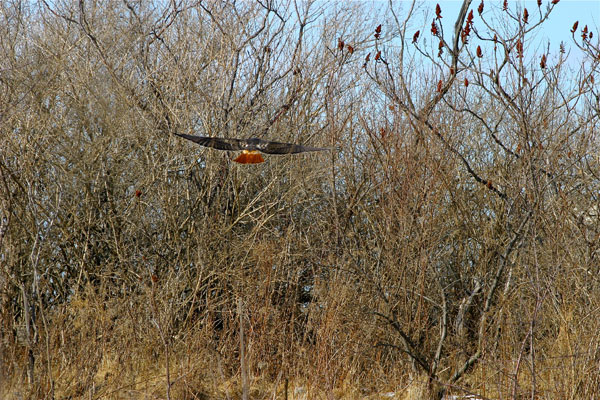

Red-tailed hawk (Buteo jamaicensis) hunts from his perch in a poplar tree at Humber Bay Park.
Big thrill today, with the sighting of a raptor hunting in Humber Bay Park East. This lovely red-tailed hawk (Buteo jamaicensis) wasn’t very skittish, and allowed me to get quite close, as you can see from the photo. While I did keep very still and quiet while I watched him, he seemed quite unconcerned as he latched his laser focus on the ground, looking for the slightest movement that would signal lunch.


Red-tailed hawk in hunting position, getting ready to make his flying attack.
As I watched, this hawk made several attempts to catch his meal, zooming down from his perch to attack something on the ground. But the first of these as I observed were all unsuccessful, and with a slow flap of his huge wings, he flew back up to the next nearest tree to resume his patient watch. Then, finally, another dash to the ground, and this time, success. Don’t know what he caught, but he took his time consuming what was probably a mouse or vole. The hawk remained concealed behind some underbrush, but I could see his head and great beak moving as he ate his prey.


No doubt what kind of hawk I was watching at Humber Bay Park.
Then, with another great flap, a flash of red as he took off to the next poplar. By this time, a few other birder types had joined me in my watch, and everyone was thrilled to get the chance to get a clear shot of this magnificent raptor as he went about his business.
I don’t have enough experience with hawks to be able to estimate this bird’s age, but I do know that in very young red-tails, the iris of their eyes is yellow. It gradually darkens to the reddish-brown colour you can see in the photo.
Red-tails are members of the genus Buteo, medium-sized raptors known as buzzards in Europe. In the United States, red-tails are commonly called chickenhawks. However, according to Wiki, these birds rarely hunt chickens. They prefer small mammals, particularly rodents, but are carnivorous, and will also hunt and eat birds, reptiles, fish and even crustaceans.
There’s another sure sign of spring in these photos. The hawk is perched on a poplar — actually an eastern cottonwood, I think, (Populus deltoides). Its buds are already swelling.
Spring is busting out all over, and I, for one, couldn’t be happier.
© BCP 2010


no comments